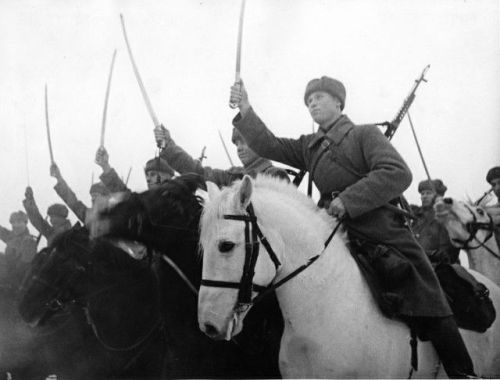mountedhistory:Soviet Horse Cavalry 1941-1945“I though nothing could surprise me, having been sent t
mountedhistory:Soviet Horse Cavalry 1941-1945“I though nothing could surprise me, having been sent to serve in a mortar unit after studying in an artillery school, but to be sent to the cavalry! (…) I was impressed with the origin, traditions, and titles of my new unit. Nevertheless, I thought cavalry had no place in modern warfare and decided to leave the unit immediately after receiving my next wound. Later, however, my opinion radically changed, and I always returned to the cavalry after recovering from wounds.It is important to say a word about our battle horses. They were real soldiers like us and well understood what they had to do, either on the march or during a charge. We did not need to strike them with whips: they themselves knew from the situation when they had to gallop forward at breakneck speed, without paying attention to firing and explosions all around. Each rider loved and respected his battle-tested horse, which in many cases saved his skin. A battle-tried horse was much more valuable to us than the best racing thoroughbred that had never seen action. Battle-tried horses never got scared under fire and were capable of fulfilling any task on the battlefield. I must say such sabre charges did not happen often, and in most battles the riders fought on foot, using horses only as a means of transportation. When we encountered strong German resistance, we would get off our horses and fight as infantry, while the grooms (there were about ten per squadron) would gather our horses and take them to a safe spot. It was only if the Germans panicked and fled that we charged with sabres. During two years of fighting in a cavalry regiment, I only saw some five charges.”- Ivan Yakushin, officer in the 5th Guards Cavalry Division -- source link
Tumblr Blog : mountedhistory.tumblr.com








